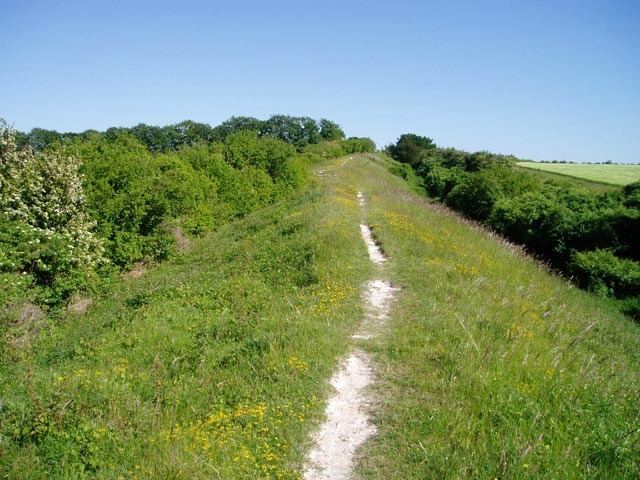Grid reference TL 551 539 Location map Magic Map Area of search Cambridgeshire | Interest Biological Area 8 ha Notification 1984 | |
 | ||
Fleam dyke
Fleam Dyke is a 7.8 hectare biological Site of Special Scientific Interest between Fulbourn and Balsham in Cambridgeshire. It is also a Scheduled Monument.
Contents
Steam engines at fleam dyke pumping station
History
The dyke is a seven meter high linear bank and ditch which ran from Fulbourn to Balsham. Most of it survives and is now a footpath. In the nineteenth and early twentieth centuries Anglo-Saxon weapons and burials were found, and the dyke was thought to have been built in the seventh century as a defence of the Kingdom of East Anglia in its wars with Mercia. An excavation in 1991 established that it had been built in several phases, the first between 330 and 510, and the last between 450 and 620. It is now believed most likely to have been built by early Anglo-Saxon settlers in the fifth century as a defence against Romano-British attempts to recover their territory. The dyke runs through a Bronze Age barrow at Mutlow Hill, which was reused in the Roman period as a temple.
Ecology
Fleam Dyke is one of 286 sites selected by Charles Rothschild in 1912 to 1915 as wildlife sites "worthy of preservation" in Britain and Ireland. The steep banks of the earthwork have species-rich chalk grassland, a rare habitat in the county. The dyke, which is maintained by grass cutting, is the only Cambridgeshire site for the common juniper.
The Harcamlow Way long distance footpath runs through the site.
